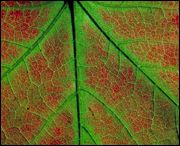Whether you accept it, avoid it or live somewhere in between, insurance coverage has become a defining issue for our profession. Patients increasingly expect to use their benefits, practitioners want to be compensated fairly for their time and expertise, and the system itself remains – at best – fragmented. The encouraging news is that coverage has expanded in meaningful ways. The challenging news is that reimbursement, across the board, remains inadequate.
Vitamins, Minerals and Dietary Supplements
Chlorophyll
What is chlorophyll? Why do we need it?
Chlorophyll is the substance responsible for giving green plants their color. It harnesses the sun’s energy during photosynthesis and is responsible for a variety of metabolic functions, including perspiration and growth. Interestingly, the chlorophyll molecule is chemically similar to human blood, except that its central atom is magnesium, whereas in human blood, the central molecule is iron. It acts as an anti-inflammatory and antioxidant.
 Historically, chlorophyll was used to treat gastrointestinal problems and to promote the formation of red blood cells and hemoglobin. It has also been used to combat bad breath and reduce the strength of odors associated with urine, feces and infected wounds. There is some preliminary evidence that chlorophyll may detoxify substances that could cause cancer.
Historically, chlorophyll was used to treat gastrointestinal problems and to promote the formation of red blood cells and hemoglobin. It has also been used to combat bad breath and reduce the strength of odors associated with urine, feces and infected wounds. There is some preliminary evidence that chlorophyll may detoxify substances that could cause cancer.
How much chlorophyll should I take?
Because chlorophyll is not considered an essential nutrient, there are no guidelines regarding recommended daily allowance. However, some practitioners recommend 100mg of a chlorophyll capsule or tablet taken 2-3 times a day to fight odors.
What are some good sources of chlorophyll? What forms of chlorophyll are available?
chlorophyll is available in a wide variety of forms, from fresh cut herb to tablets, extracts (both fluid and dry), tinctures and infusions.
What can happen if I don't get enough chlorophyll? What can happen if I take too much chlorophyll? Are there any side-effects I should be aware of?
Since chlorophyll is not an essential nutrient, dietary allowances have yet to be established. However, it is known that individuals who do not get enough green foods in their diet may lack a necessary amount of chlorophyll. As of this writing, there are no known side-effects or drug interactions with chlorophyll.
References
- Chernomorsky SA, Segelman AB. Biological activities of chlorophyll derivatives. N J Med 1988:85;669—73.
- Govindjee, Papageorgiou. Chlorophyll. McGraw-Hill Encyclopedia of Science and Technology, 7th ed. 1992;3:581-584.
- Hayatsu H, Negishi T, Arimoto S, et al. Porphyrins as potential inhibitors against exposure to carcinogens and mutagens. Mutat Res 1993:290;79—85.
- Keith V, Gordon M. The How To Herb Book. Pleasant Grove, UT: Mayfield Publishing Co, 1984.
- Pedersen M. Nutritional Herbology. Bountiful, UT: Pedersen Publishing, 1987.


